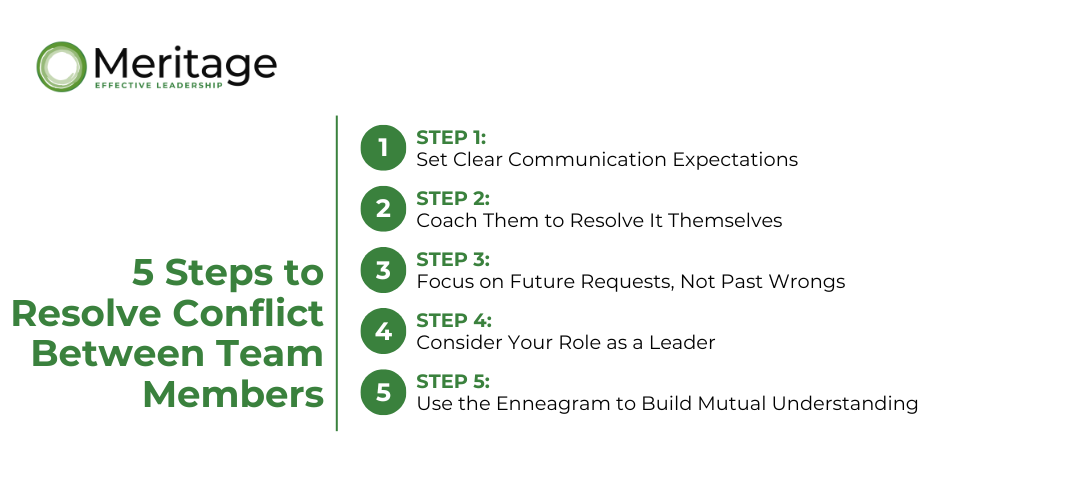Why Conflict on Teams Isn’t Always a Bad Thing
Conflict between team members on your team can be painful . . .and I bet you know how it starts.
A few comments in passing during your one-on-one calls. A ‘joke’ that clearly isn’t. A slow pile of complain-y emails and a draining, low-key battle of he-said, she-said.
Are you feeling stressed out and exhausted just thinking about it? Most CEO’s or leaders feel like dealing with team conflict is like babysitting, but – hear me out! – it’s not always a bad thing. If you manage it correctly, conflict can be productive.
Not all professional conflict is created equal. ‘Good’ conflict can lead to great business.
Struggling with tension on your team? Download our free guide to delegation — it’s a great first step toward building stronger communication.
Why you need conflict
Conflict is a normal part of any relationship – personal or professional, so don’t be surprised when it inevitably pops up.
Conflict prevents group-think. When your team members aren’t afraid to share their opinions and disagree with each other, you’ll avoid those Yes Men scenarios where everyone signs off on a terrible idea because they’re afraid to speak up.
Conflict also challenges our thinking and shakes up Business As Usual. When we have the right people on our team and they’re sharing the right ideas, conflict can actually move our business forward with innovation.
5 Steps to Resolve Conflict Between Team Members
Step 1: Set Clear Communication Expectations
When you’re onboarding a new hire, set expectations around communication between team members – or bring up the topic of conflict at your next team meeting. Here’s the gist of the message: you don’t want your team members to email you and complain about colleagues and you don’t want to make yourself the center of a complicated wheel – all of which smack of passive-aggressive behaviors.
From the get go, give your team the language and expectations that they can and should communicate directly with each other. Getting you involved should only focus on helping them have the conversation with their colleague, not requesting you to do the dirty work for them.
Step 2: Coach Them to Resolve It Themselves
Help provide the tools, and leverage your own experience in dealing productively with conflict as your guide. Coach your team members (individually) on how they can approach their colleague about this issue. When you give them the skills to do this themselves, you’re teaching them something they can use in any area of their life and you’re empowering them to take action. You’re also reducing the likelihood they’ll involve you in their inter-team conflicts in the future. Want to help your team navigate challenges independently? Our high-performing team programs are built to boost collaboration and trust.
Step 3: Focus on Future Requests, Not Past Wrongs
Rather than blaming each other or focusing on what each person did wrong, teach your team to focus on the future. “I was so angry when you missed that deadline, I wanted to spit tacks” = no. “From now on, when you realize that you’re running behind schedule, I’d appreciate it if you’d let me know as soon as possible so we can re-calibrate” = yes.
When you’re coaching a team member, ask them “How would you like [name] to handle this in the future? What do you want to be different next time around? What requests can you make of your team member to create a better result?” Once they have their answer, encourage them to actually make that request.
Curious how your team’s leadership styles may be creating conflict? Try our Enneagram Applied course to uncover how personality drives team dynamics.
Step 4: Consider Your Role as a Leader
Sometimes inter-office conflict has little to do with you and everything to do with your individual team members’ work and communication styles. But before you decide that this conflict has nothing to do with you, look at the work you delegated and the expectations you set around it.
Did you assign something to your product director that your marketing manager should be doing? Did you set unrealistic deadlines that made everyone cranky and late? Think hard about your role in this and consider if your lack of clarity on roles, accountability and collaboration has contributed to the issue. Clarifying expectations and structure is also key to building executive presence as a leader.
Step 5: Use the Enneagram to Build Mutual Understanding
What’s the Enneagram? It’s a model that helps you discover how your leadership style impacts your work and those you lead. Are you a Reformer, concerned about maintaining quality and high standards? Are you a Peacemaker, working to maintain harmony and trying your hardest to avoid conflict? Each style has strengths and blind spots in communication. And when the whole team knows what this is for themselves and others, you can work more effectively to mitigate the challenges and leverage the individual and collective strengths.
I’ve been using the Enneagram more and more to help corporate teams collaborate effectively and deal with team conflict productively. Even better, it’s helping create true diversity of thought by enabling team members to see the gifts in leadership that each of the different styles bring to the table. If you’d like to determine the Enneagram Leadership Style for yourself and your team, we can help! You can also take our free Enneagram leadership quiz to discover your style and how it affects how you manage conflict.

Conflict may never be fun (for some leadership styles, that is!). Many of us will never look forward to those moments when our team members inevitably butt heads, but with a bit of strategy you can train your team to growth and deal with it productively. And you are all better because of it!
Ready to turn conflict into growth? Contact us to build a custom team strategy rooted in clarity, compassion, and collaboration.


